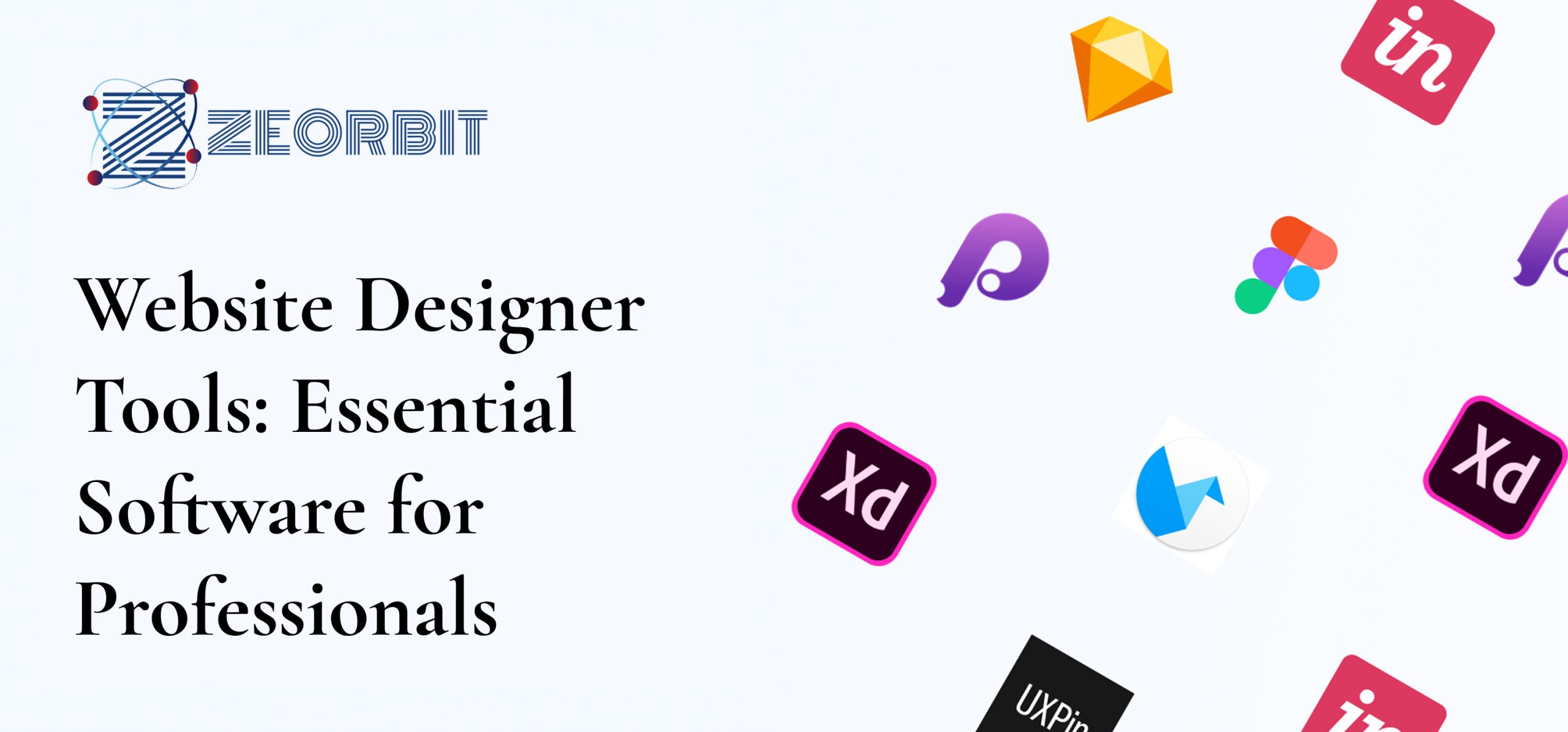Website Designer Tools: Essential Software for Professionals
Website Designer Tools: Essential Software for Professionals
Being a website designer in today’s digital landscape requires more than just a creative eye. It demands a mastery of specific tools that streamline the design process, enhance collaboration, and ultimately deliver a visually appealing and user-friendly website. This article explores some essential software for website designers.
1. Design and Prototyping Tools
These tools are the foundation of your design workflow. They allow you to create mockups, wireframes, and prototypes to visualize the website’s layout and functionality.
1.1. Adobe XD
- Description: A powerful vector-based UX/UI design tool perfect for creating interactive prototypes and user flows. It offers excellent collaboration features and integration with other Adobe products.
- Pros: User-friendly interface, strong prototyping capabilities, seamless integration with the Adobe ecosystem.
- Cons: Can be subscription-based and may be resource-intensive.
1.2. Figma
- Description: A cloud-based collaborative design tool that’s rapidly gained popularity. Known for its real-time collaboration features and cross-platform compatibility.
- Pros: Excellent for team collaboration, browser-based accessibility, free tier available.
- Cons: Requires a stable internet connection.
1.3. Sketch
- Description: A vector-based design tool focused on UI design. It’s primarily available for macOS and boasts a large library of plugins to extend its functionality.
- Pros: Clean interface, wide range of plugins, optimized for macOS.
- Cons: Mac-only, less collaboration features than Figma out-of-the-box.
2. Image Editing and Optimization Tools
High-quality visuals are crucial for any website. These tools help you manipulate images, optimize them for web use, and maintain a consistent visual identity.
2.1. Adobe Photoshop
- Description: The industry standard for image editing. It allows you to manipulate images, create graphics, and prepare visuals for web use.
- Pros: Comprehensive features, powerful editing capabilities, widely recognized.
- Cons: Can be expensive, steep learning curve for beginners.
2.2. GIMP (GNU Image Manipulation Program)
- Description: A free and open-source image editor that provides a wide range of tools for image manipulation and creation.
- Pros: Free to use, open-source, powerful features.
- Cons: Steeper learning curve compared to some other tools.
2.3. ImageOptim
- Description: A free tool that optimizes images for web use by reducing file size without sacrificing quality. Crucial for improving website loading speed.
- Pros: Free, simple to use, significantly reduces image file sizes.
- Cons: Primarily focuses on optimization, not image editing.
3. Code Editors
While website designers don’t necessarily need to be expert coders, familiarity with HTML, CSS, and JavaScript can be beneficial. These code editors provide a comfortable environment for viewing and editing code.
3.1. Visual Studio Code (VS Code)
- Description: A free, lightweight, and extensible code editor developed by Microsoft. It supports a wide range of programming languages and offers features like syntax highlighting, debugging, and version control integration.
- Pros: Free, highly customizable, extensive extension library.
- Cons: Can be overwhelming for beginners due to the number of features.
3.2. Sublime Text
- Description: A sophisticated text editor for code, markup, and prose. Known for its speed, performance, and customizable interface.
- Pros: Fast performance, clean interface, powerful features.
- Cons: Requires a license after the trial period.
4. Collaboration and Project Management Tools
Effective communication and organization are vital for successful website design projects. These tools help you manage tasks, share feedback, and collaborate with clients and team members.
4.1. Trello
- Description: A visual project management tool that uses boards, lists, and cards to organize tasks and track progress.
- Pros: User-friendly interface, visual organization, free plan available.
- Cons: Limited features in the free plan.
4.2. Asana
- Description: A more robust project management tool that offers features like task dependencies, timelines, and reporting.
- Pros: Comprehensive features, strong organization capabilities, good for larger teams.
- Cons: Can be more complex than Trello.
Choosing the right tools depends on your specific needs, budget, and workflow. Experimenting with different software can help you find the perfect combination to enhance your productivity and creativity as a website designer.


